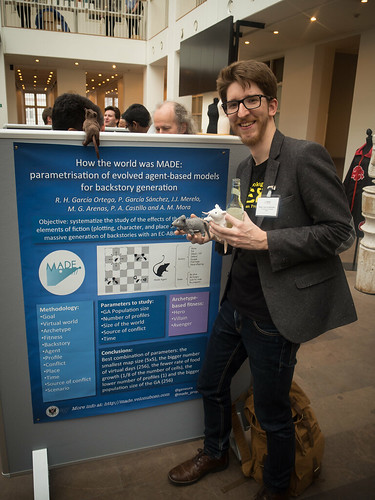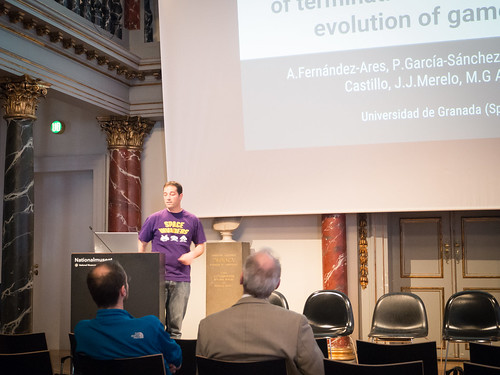Today we have presented our first international paper on the scope of 5G. I have used for that my favourite metaheuristic: Ant Colony Optimization, which has been adapted to solve a problem of network service composition, i.e., the so-called Service Function Chaining.
The paper is titled «Applying Ant Colony Optimization for Service Function Chaining in a 5G Network» paper with the same title presented today (22 October 2019) in Granada, on the «6th IEEE International Conference on Internet of Things: Systems, Management and Security (IOTSMS 2019)«, and in this, inside the «International Workshop on Efficient and Smart 5G Technologies for IoT (ES5TI)«.
The abstract of the paper is:
The growth of data traffic and the demand for new services are two of the main challenges to take into account in the design of next-generation networks. Service Function Chaining (SFC) is a technique that allows the execution of advanced services, routing network traffic through an ordered list of virtual functions. This mechanism is getting great relevance due to the rise of Software-defined Networks (SDNs) and the use of Network Function Virtualization (NFV), as well as the offered possibilities in terms of flexibility and automation. Given the existing need for operators to offer low latency services in 5G networks, the composition of this chain is a critical process that affects the performance of these services. Inside this context, this paper presents the design and implementation of an Ant Colony Optimization algorithm (ACO) for the minimization of the routing cost of service chain composition. ACO is a specially designed metaheuristic to work with weighted graphs, also considering restrictions, as is the case of the addressed problem. To test the value of the implemented algorithm, two different instances have been solved. The first one (with only 6 nodes) is a proof of concept, which easily allows to analyze the obtained solutions. The second one (19 nodes) models a medium-size 5G network, and tries to show the performance of this method in a wider graph. The results show that the proposed algorithm can lead to optimal solutions in many cases, even in a short time (less than 0.5 seconds) in the largest instance, so we consider this method as a very promising solution in this field.
The presentation can be see from Slidehare:
Enjoy it!
(and cite us :D)


